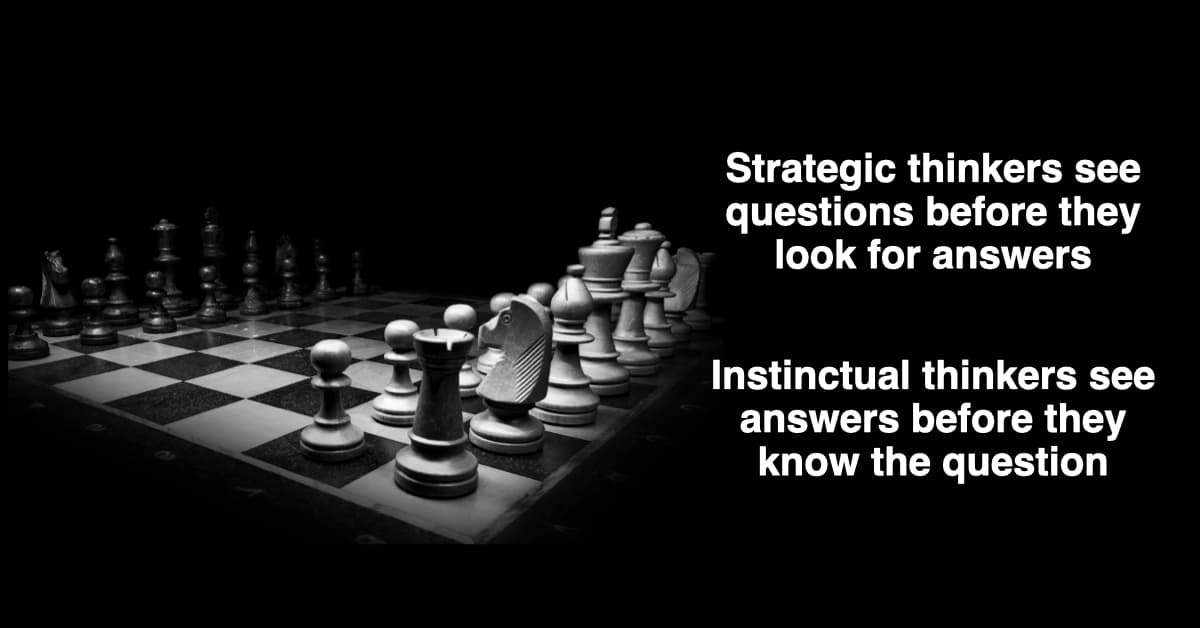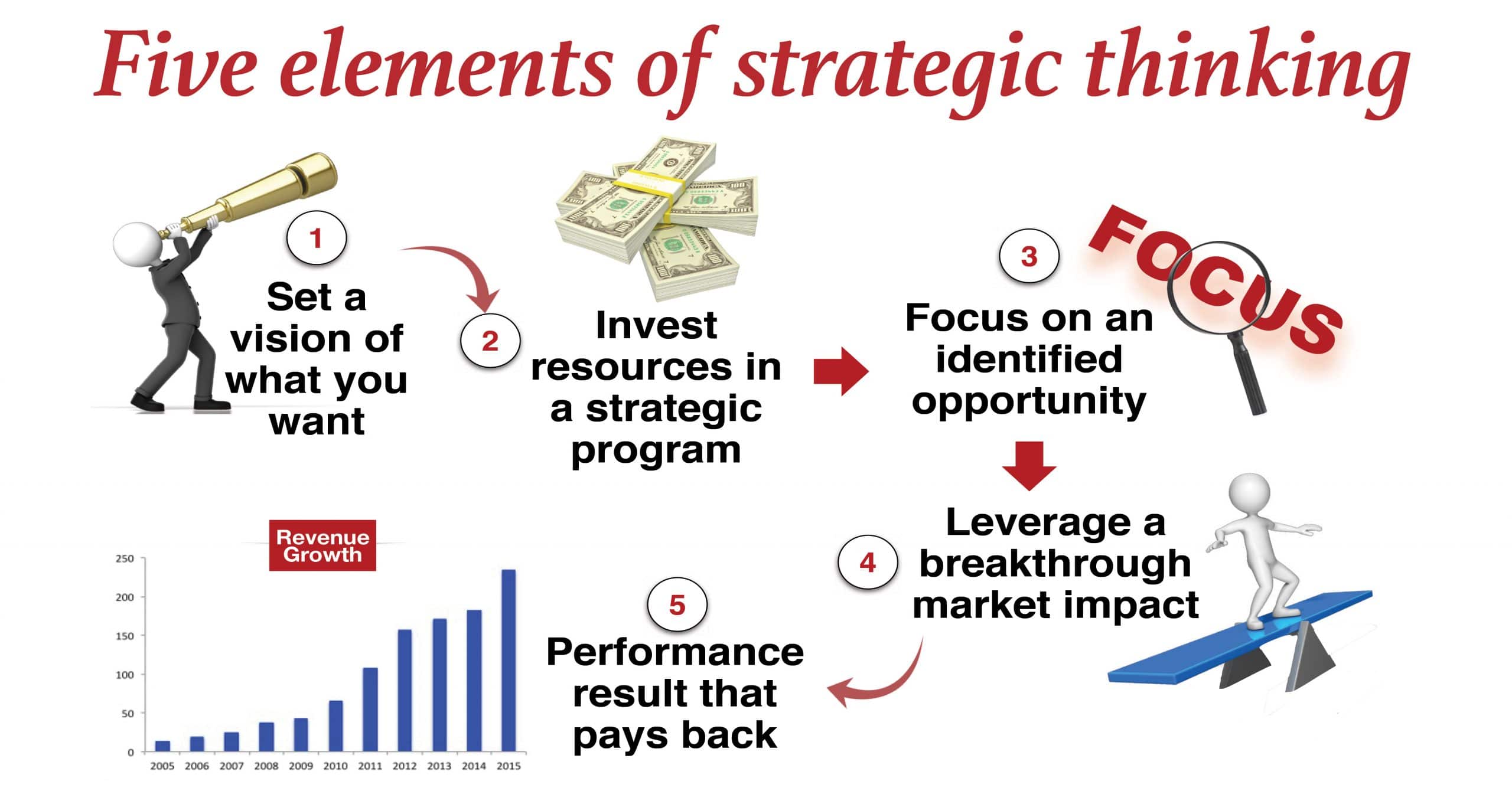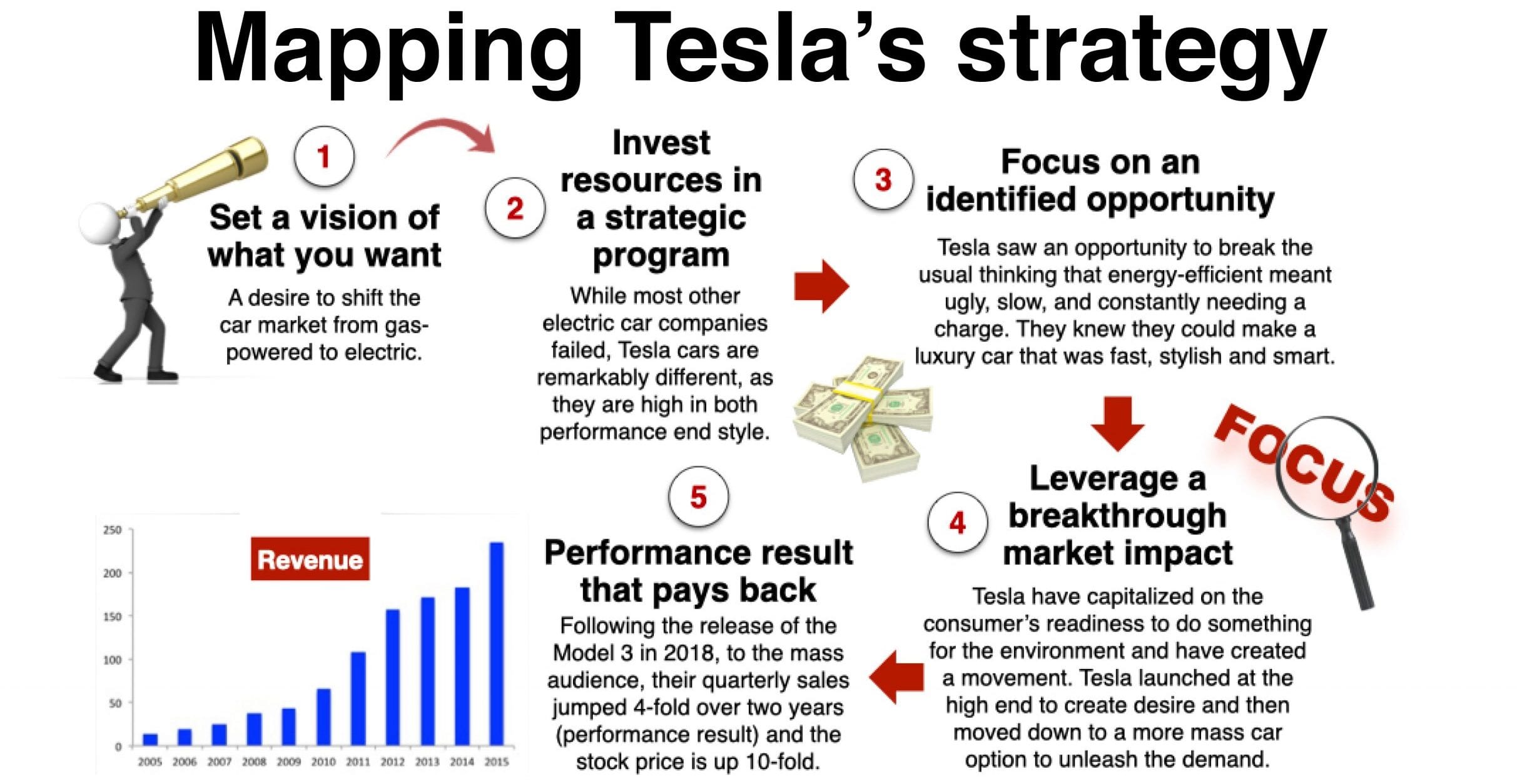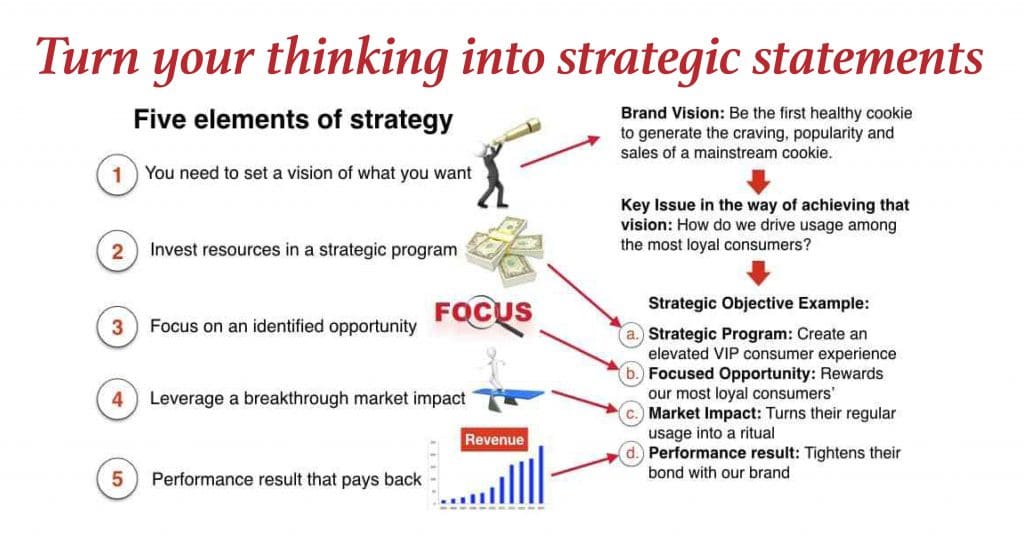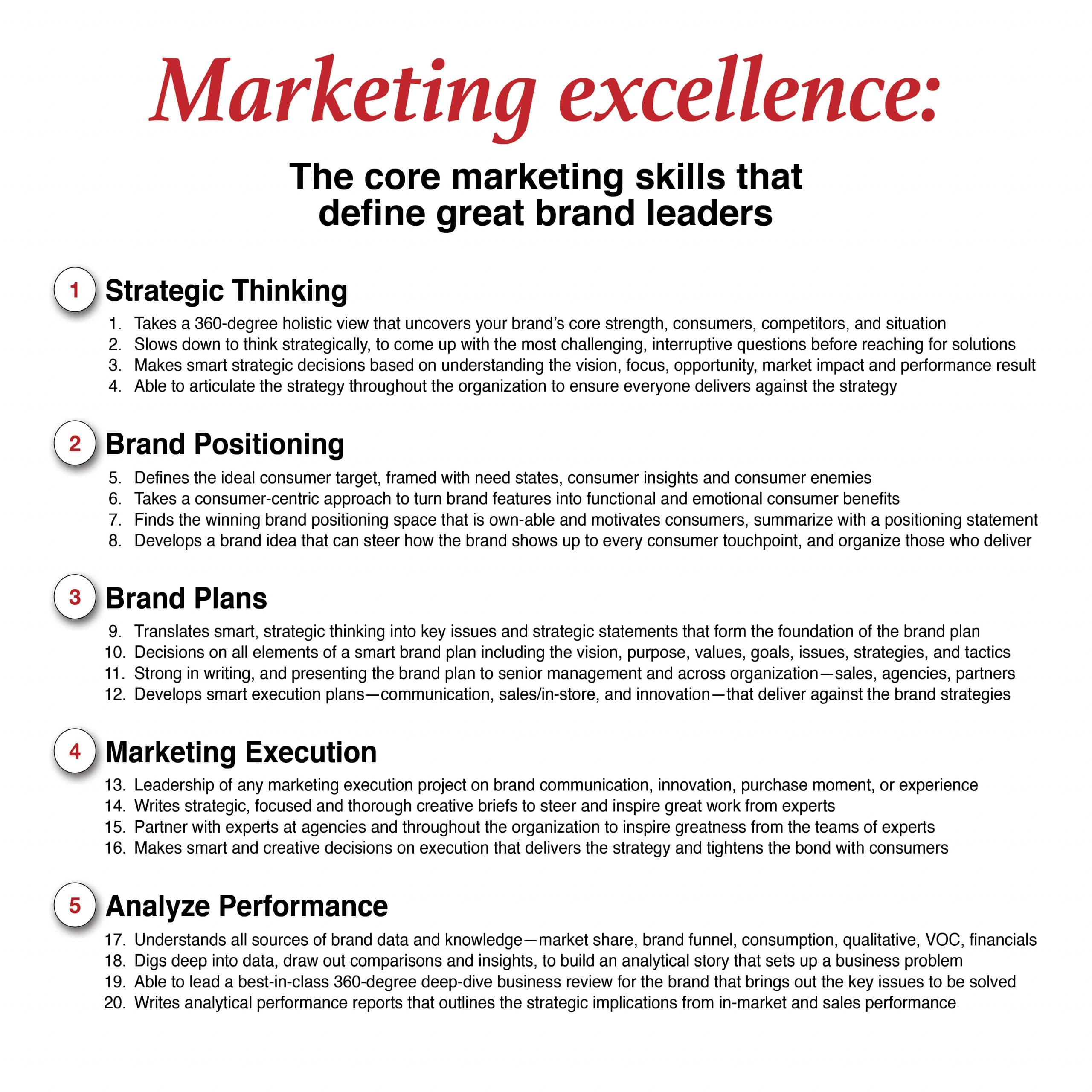Strategic thinking skills force you to look your brand’s core strength, the tightness of the bond you have with your consumers, the level of competitive rivalry, and the business situation your brand is facing. The reality is that you need to be a strong strategic thinker to go beyond the manager level. You will be held back if your ideas are not strategic enough. Yet in my 20 years of brand management, no one ever talked to me about what it means to be strategic or how being strategic shows up in the job. It always feels like judgment without explanation.
When I ask senior leaders what it means to be strategic, the answers I get back are somewhat cliché. I hear “they see big picture” or “operating at 30,000 feet” or “playing chess instead of checkers.” These clichés don’t add value to the discussion. It suggests that strategic leaders don’t get stuck in the details, but why doesn’t it take details to think strategically? If senior leaders can’t explain the strategy, no wonder there is confusion.
Too many marketers get so busy with the day-to-day that they don’t even take the time to slow down and think about strategy. You have to find the time to do the necessary critical strategic thinking to win in the market. You have to force yourself to ask big questions that challenge everyone and help focus on the brand’s decisions.
The fundamentals of marketing matter
The marketing fundamentals that we show in this article are part of what we use in our marketing training programs. Marketers will learn strategic thinking, brand positioning, brand plans, writing creative briefs, advertising decision-making, marketing analytics, and marketing finance.
Strategic Thinking
Strategy thinking is about making the choice in what to do and what not to do
Strategy thinking starts with a vision of an ideal state of what you want to achieve. Dig in to truly understand the circumstances and situation your brand faces. Slow down your brain to match the complexity of the issues that reside beneath the surface. Ask the right questions that uncover the issues in the way of you achieving your vision. What is happening in the market with consumers and competitors and your brand? Whether your project will take two years to complete or two days, or two hours, the smart strategic thinkers can visualize an ideal end state and know-how that helps their brand.
Naturally, your mind will spin with endless possibilities for what you want to do, but you can’t do everything you wish. Focus by limiting your choices to match up to the limited resources you can deploy. While your mind may not be limited, you are limited by the amount of money, people, time, and partnerships that are available to you. When you hear “you’re not strategic enough,” the person is saying that they like your ability to generate ideas but are concerned that you can’t limit yourself to those ideas, that you can’t or won’t stay focused.
Flawed leaders try to do too much, do everything, be everywhere, and say everything. If you try to be everything to anyone, you end up nothing to everyone. If you try to be on every channel or every shelf, you will have so little impact on any media channel or shelf that no one will see you. This is a business strategy, not just marketing. It is fundamentally sound to spend against the best choices you know will pay back, with both short and long-term options.
You are not strategic if you come to a set of options and choose to do both.
A little of both will always be worse than focusing on the best. Don’t spread your resources. If you do, you will deplete the power of the impact.
Narrow your choices down to what you see as an identified opportunity for your brand to win. Is there a changing dynamic that opens a door for you? Do you see a change in the marketplace with consumers or how they shop? Are there new competitors or the struggles of current competitors? Do you see changes due to political, economic, social, or technology change?
Sort through the possibilities to narrow in on choices that will have the most significant market impact. Your brand needs a breakthrough to create a tipping point that adds more power. Make sure your strategy moves consumers along their journey in ways that tighten their bond with your brand.
The market impact bounces back to create a performance result for the company, with a positional power that drives increased sales and added profitability. The best leaders can see the final result and envision what it does for the brand. With short-term options, a transactional approach drives profits now to ward off a competitive attack or take advantage of a short-term window. With longer-term options, you might gain the power now as stored energy for your brand to be used in the future to be unleashed at the right moment.
Strategic thinking skills force you to structure your mind
Let’s take a look at Netflix’s entry into the streaming market. They saw a need to gain a dominant power player position before other significant players entered the market (vision). To create the market, they offered consumers a low price to sign up, no TV ads, and high-quality programming to get consumers to shift their viewing habits from cable to streaming (focus). These addressed many of the consumer pain points (identified opportunity) and allowed Netflix to attract millions of new consumers (market impact) that gave Netflix the clear, number one market share and a future revenue stream (performance result).
Tesla started in 2003 with a desire to shift the car market from gas-powered to electric (vision). While other electric car companies failed, Tesla cars are remarkably different, as they were high in both performance end style (focus). Tesla saw an opportunity to break the usual thinking that energy-efficient meant ugly and poor performance (identified opportunity). They have capitalized on the consumer’s readiness to do something for the environment and have created a movement. They started at the high end to create a strong desire for their beautiful cars and then moved down to open up to the masses (market impact). Following the release of the Model 3 in 2018, their quarterly sales jumped 4x over two years (performance result).
Read our Tesla case study
Our Tesla case study shows how Tesla has created such an intense desire among consumers that it caused some problems, but certainly solved many others. Their biggest issue has been their inability to deliver, until now. While over the past five years, they look like an “overnight success,” they have been in business since 2003. It took Tesla the first eight years to sell a few thousand cars. By then, most of the founders were gone, leaving Elon Musk steering the ship.
To illustrate, click on the diagram to zoom in.
Read our article on how to write a strategy statement that you can use in your marketing plan
Use our five elements of strategy to lay out a vision, investing limited resources into strategic programs, bringing a focus on an identified opportunity, making a market impact, and realizing the performance result that makes your brand stronger and wealthier.
To illustrate, click on the diagram to zoom in.
Strategic thinking skills for marketers
- Take a 360-degree strategic view by looking at your brand’s core strength, how consumers engage, the stance your competitors are taking, and the current business situation you face. Before you can determine a strategy, gain an understanding of the unique circumstances facing your brand.
- Ask the right interrupting and challenging questions to help slow your brain down to a reflection speed. Understand the issues surrounding the brand before you reach for solutions.
- Make smart strategic decisions that map out a vision, focus the brand’s limited resources, take advantage of an opportunity, and gain an early win that will drive added power or profits.
- Be able to articulate the strategy throughout the organization and ensure that everyone who touches the brand delivers their part of the strategy.


